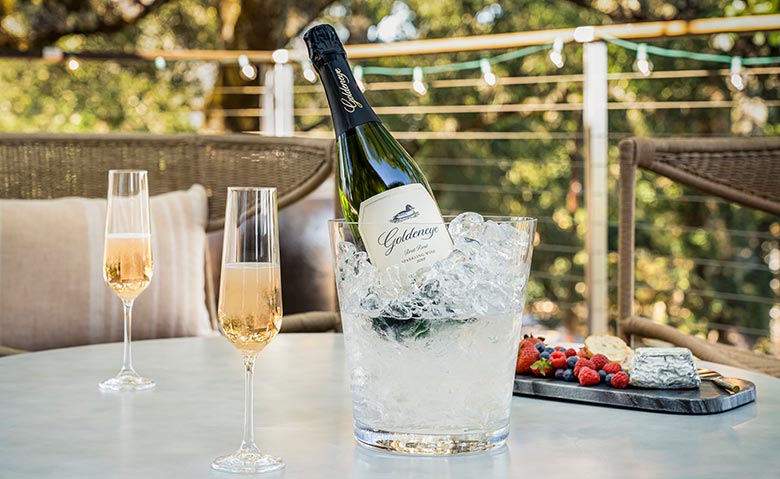What is Méthode Champenoise?

All that glitters is not gold and all wines that sparkle did not attain their bubbles in the same way! Three of our Duckhorn Portfolio wineries (Goldeneye, Migration and Decoy) all make excellent sparkling wines. With that achievement in mind let’s take a moment to learn about the venerable method used to create these lovely bottlings.
All three of these wines sparkle because they were made following a labor-intensive process called the Méthode Champenoise. Méthode Champenoise translates roughly to “the Champagne Method.” Wines have been made following this method since the late 17th century. Very appropriate terminology when you consider this pathway was devised in Champagne, France. Once the process was established the methodology traveled from France to Spain and on to Italy. Eventually this process was adapted by wineries in the New World including here in California. In the most precise terms Champagne wines hail only from the Champagne Region of France. When bubbly wines come from outside Champagne, France we call them sparkling wines. There are three main grapes that have been the stars in these kind of wines for centuries: Pinot Noir, Chardonnay and Pinot Meunier. All the sparkling wines made by The Duckhorn Portfolio feature unique combinations of these three traditional grapes.
Whether it is called Champagne or sparkling wine, what is important is how the wine is made. It is universally agreed upon that the best Champagnes and sparkling wines in the world are made following the Méthode Champenoise. The key element to this process is a secondary fermentation in the bottle.
This secondary fermentation is accomplished by adding the liqueur de tirage to the still base wine. The liqueur de tirage is a liquid solution of yeast, wine and sugar that is added to the still base wine resulting in a secondary fermentation in the bottle. The extra heft you feel on sparkling wine bottles is due to the thickness of the glass. This extra heft is necessary to contain the trapped carbonation safely inside and to prevent the bottle from exploding.
Once this base wine is seeded with the liqueur de tirage it is then bottled and closed with a crown cap like a cap on a bottle of beer – not a cork. The yeast consumes the sugar causing a second fermentation in the bottle. The resulting carbon dioxide from this fermentation remains trapped in the bottle. Fun fact, the PSI (pound force per sq inch) in a bottle of sparkling wine is typically between 70 and 90 pounds per square inch. That is two to three times the pressure in your car's tires and why you should always open these bottles carefully.
Quality sparkling wines are aged in contact with their yeast cells for several months, even up to six years. At the end of this process the cap is removed along with the expired yeast cells in a step called disgorgement. A finishing wine called the dosage is added that enhances complexity and establishes the sweetness level for the finished wine. Finally, the crown cap is replaced with the traditional cork held securely in place with a wire cage.
There are cheaper less artistic ways to get fizz into a bottle of wine. The important thing to remember is that the secondary fermentation happens in the bottle in high quality sparkling wines. Only wineries that follow the practice described here are legally able to use the phrase Méthode Champenoise or champagne method on their bottles. If you see the word “charmat” it means the secondary fermentation happened in a large tank, usually an indicator of a lesser quality wine.
Here’s to celebrating life on a daily basis with flutes lifted high! Cheers!
